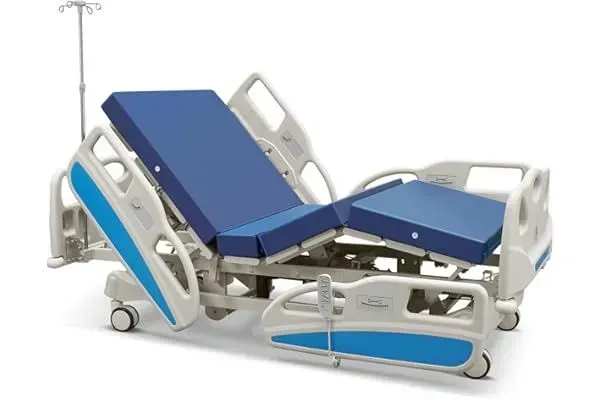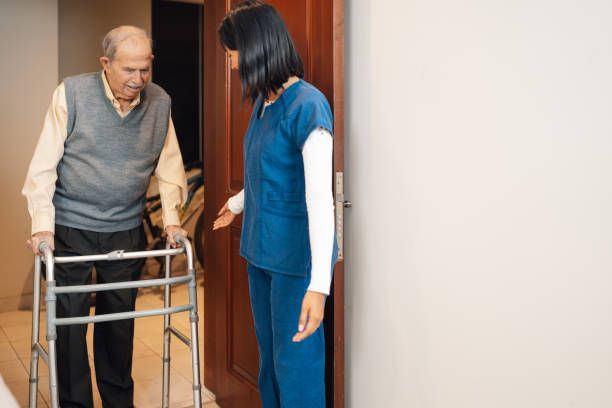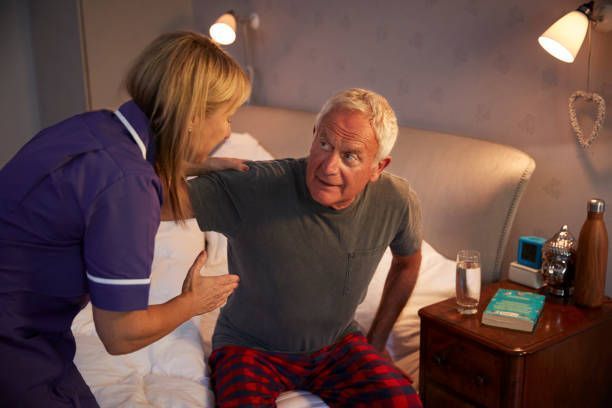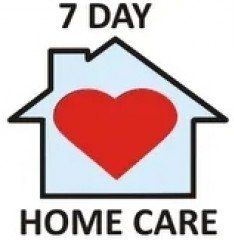In-Home Hospital Beds: A Guide to Caring for Your Loved One
In-Home Hospital Beds: A Guide to Caring for Your Loved One
In-home hospital beds play a critical role in patient care, offering comfort and medical support for those with limited mobility or chronic health needs. These beds are designed with adjustable features that assist patients in changing positions, preventing bedsores, and reducing strain on caregivers. For both patient and caregiver safety, it's essential to have secure bed rails, anti-slip mattresses, and easy-to-use controls, all of which minimize the risk of falls and injuries. Caregivers benefit from the bed's ability to raise and lower, allowing them to assist with daily tasks like bathing or dressing without excessive bending or lifting, reducing the chance of musculoskeletal injuries. Proper use of these beds not only promotes a safer, more comfortable recovery but also helps maintain the physical well-being of those providing care.
7 Day Home Care provides home care services in Manhattan,
Queens, Brooklyn, Nassau County, and Suffolk County, New York. To learn more about our home care services near you, please call 516-408-0034.

In-Home Hospital Bed Can Provide Enhanced Support and Comfort
As we navigate the journey of caring for a loved one at home, making the home environment as comfortable, accessible, and safe as possible is paramount. For individuals with mobility limitations, chronic illnesses, or recovery needs, an in-home hospital bed can provide enhanced support and comfort. In this guide, we’ll explore everything you need to know about in-home hospital beds, covering the different types available, features, benefits, and crucial safety considerations like side rails.
1. Understanding In-Home Hospital Beds
What Are In-Home Hospital Beds?
Hospital beds designed for in-home use are specialized beds that allow patients to adjust their positioning and receive tailored support. Unlike standard beds, they are crafted to enhance comfort, prevent bedsores, and assist caregivers in providing daily care.
Who Needs an In-Home Hospital Bed?
An in-home hospital bed can benefit a wide range of people, such as those with limited mobility, those recovering from surgery, elderly patients needing added support, and individuals with chronic health conditions. If your loved one faces difficulties moving in and out of bed, managing their own positioning, or is at risk of falls, an in-home hospital bed may be essential for their well-being.
2. Types of In-Home Hospital Beds
Choosing the right type of hospital bed depends on your loved one’s needs and your budget. Here’s a look at the main types of hospital beds for home use:
1. Manual Hospital Beds
Manual beds require caregivers to adjust the bed’s positioning by hand, typically through a crank system. These are cost-effective but may require more physical effort from caregivers.
2. Semi-Electric Hospital Beds
Semi-electric beds allow the head and foot positioning to be adjusted electronically while height adjustments are done manually. This design offers added comfort for the patient and is easier for caregivers than fully manual beds.
3. Fully Electric Hospital Beds
Fully electric beds allow for complete adjustment of head, foot, and height through a remote control. They provide greater convenience for both patients and caregivers, though they come at a higher price.
4. Bariatric Hospital Beds
Designed for patients with higher weight capacities, bariatric beds are more spacious and reinforced for durability. They are generally fully electric and feature extra safety mechanisms.
5. Low Hospital Beds
Low hospital beds are closer to the floor, which reduces the risk of injury from falls. They are ideal for individuals who may try to get out of bed without assistance.
3. Essential Features of In-Home Hospital Beds
Adjustable Positions
The primary feature of hospital beds is their ability to adjust positions. Most hospital beds allow for the head, foot, and bed height to be raised or lowered. Adjusting these positions can reduce pressure sores, improve breathing, and aid in digestion.
Side Rails
Side rails offer stability, security, and safety for the patient. Full-length rails cover the entire bed length, providing added fall prevention, while half-length rails cover a portion of the bed and allow for easier access when the patient needs to get out. However, partial rails can pose risks if not installed or used properly.
Wheels and Locking Mechanisms
Hospital beds often come with wheels for easy movement, which is particularly useful when rearranging a room. Make sure the wheels have a reliable locking mechanism to keep the bed steady when in use.
Mattress Options
In-home hospital beds are compatible with a variety of mattresses, including foam, air, and alternating pressure mattresses, each with unique benefits for reducing pressure sores and enhancing comfort.
4. Safety Considerations for In-Home Hospital Beds
Side Rail Safety
Side rails are a key feature for in-home hospital beds but come with risks if not used correctly. Here are some points to consider:
• Full-Length vs. Half-Length Rails: Full-length rails provide maximum security, but they may make it more challenging for caregivers to reach the patient. Half-length rails are easier for patients to access but may increase the risk of entrapment or falls if the patient slips through the uncovered section.
• Entrapment Risks: Gaps between side rails and the mattress can pose entrapment risks, where limbs or even the head could get stuck. Look for beds that comply with FDA guidelines on entrapment, which specify safe spacing between rails and the mattress.
• Proper Installation: Ensure that side rails are correctly installed and secure. Poorly installed rails may loosen over time, increasing the risk of accidents.
• When to Avoid Side Rails: For certain patients, especially those with cognitive impairments or high risk of entrapment, side rails may not be recommended. Instead, consider alternatives like floor-level beds or bed alarms to minimize fall risks.
Mattress and Bed Height Adjustments
Adjusting the bed height to a level that allows the patient’s feet to reach the floor when sitting at the edge can aid in safe transfers. Additionally, choosing a pressure-relieving mattress can prevent bedsores, a common issue for patients with limited mobility.
Locking Mechanisms
Wheels can make beds more maneuverable, but it’s essential to ensure they are locked in place when the bed is stationary. Unlocked wheels can lead to dangerous movements, especially when the patient is transferring in or out of the bed.
Routine Maintenance and Inspection
Regularly inspect the bed and side rails for wear and tear, loose parts, or any issues that might compromise safety. Many hospital beds come with manufacturer warranties and recommended maintenance schedules; following these can help prevent accidents.
5. Benefits of In-Home Hospital Beds
Enhanced Comfort
Adjustable beds provide greater comfort for individuals who need to remain in bed for extended periods, allowing for customized positioning that can ease pain and enhance relaxation.
Improved Quality of Care
An in-home hospital bed makes it easier for caregivers to provide assistance, from repositioning the patient to performing daily tasks such as dressing or feeding. The adjustable height feature is especially helpful for reducing the strain on caregivers during these activities.
Promotes Independence
For individuals who can still manage some movement, semi-electric or fully electric beds give them the ability to adjust their own positioning. This can be empowering and allow them to retain some independence in their daily routine.
Reduces Bed Sores and Other Health Risks
Extended bed rest often leads to issues like bedsores, respiratory problems, and circulation issues. The adjustable positions available in hospital beds can help reduce these risks by relieving pressure points, improving lung function, and aiding in blood flow.
6. How to Choose the Right In-Home Hospital Bed
Selecting the right hospital bed for home use depends on both the patient’s needs and the home setting. Here are a few factors to consider:
• Patient’s Mobility: For patients who can transfer independently, a low bed with partial side rails may be sufficient. However, for those with severe mobility issues, a fully electric bed with full-length rails may be safer.
• Caregiver Needs: If a caregiver is providing most of the assistance, a bed with easy-to-use controls and height adjustability can reduce their physical strain.
• Space Constraints: Consider the bed size, including the need for side rails and movement around the room. Hospital beds come in various sizes, so be sure to measure your space.
• Budget and Insurance: Hospital beds range widely in price. Check with your insurance provider, as some policies may cover part or all of the cost for an in-home hospital bed if prescribed by a healthcare provider.
7. Maintaining an In-Home Hospital Bed
Proper maintenance can extend the life of the bed and ensure ongoing safety and comfort. Here’s a basic checklist for bed maintenance:
• Clean Regularly: Wipe down surfaces, especially side rails and controls, to prevent the buildup of germs and dust.
• Inspect Mechanisms: Regularly test the electric controls, bed height adjustments, and side rail stability. Make sure there are no loose bolts or other mechanical issues.
• Replace Worn Parts: Over time, mattresses, controls, and side rails may wear out. Be proactive in replacing these to avoid accidents.
An in-home hospital bed is more than just a piece of furniture—it’s an essential component of at-home care that can significantly improve your loved one’s quality of life. While choosing and maintaining a hospital bed requires careful consideration, the benefits of increased comfort, independence, and safety make it worthwhile. By understanding the various options and safety measures, caregivers can ensure they’re providing the best possible support in a familiar, comforting environment.
This article aims to support families in making informed decisions about in-home care. Whether you’re exploring options for a loved one or seeking guidance on enhancing home safety, 7 Day Home Care is here to help you navigate each step. This article by 7 Day Home Care is for informational purposes only and is not intended as a substitute for professional medical advice, diagnosis, or treatment. The information provided about in-home hospital beds and caregiver safety is general in nature and may not address specific individual needs. Always consult a qualified healthcare provider before making any decisions related to medical equipment or patient care practices. 7 Day Home Care does not endorse any specific products or brands mentioned and disclaims any liability for decisions made based on the information in this article.
7 Day Home Care provides home care services in Manhattan, Queens, Brooklyn and Long Island, New York. To learn more about our home care services near you, please call 516-408-0034.
Brian Callahan
7 Day Home Care










